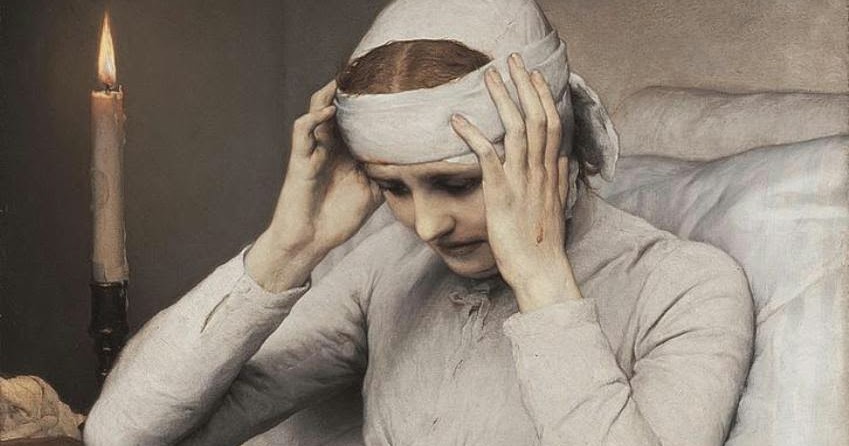According to Sister Anne,
“The soul of Jesus beheld all the future sufferings of his Apostles, disciples, and friends; after which he saw the primitive Church, numbering but few souls in her fold at first, and then in proportion as her numbers increased, disturbed by heresies and schisms breaking out among her children, who repeated the sin of Adam by pride and disobedience.”
The history of the Catholic Church attests to all of the attacks leveled on her by her ungrateful children, in large part by heresies denying Jesus born in the flesh, culminating in the Arian heresy; followed years later by the Eastern Orthodox schism that split the Church; and ultimately to the eventual fateful severing of her members in large measure by the so-called Protestant Reformation.
The thing that really interested me, though, was the descriptions of the sufferings Jesus suffered as “He saw the tepidity, malice, and corruption of an infinite number of Christians, the lies and deceptions of proud teachers, all the sacrileges of wicked priests, the fatal consequences of each sin, and the abomination of desolation in the kingdom of God, in the sanctuary of those ungrateful human beings whom he was about to redeem with his blood at the cost of unspeakable sufferings.” (Emphasis added, for the abomination of Pachamama that is amazingly occurring in our midst at the behest of Pope Francis!)
There is such a wealth of things to ponder as Anne further elaborates how Jesus witnessed,
“The scandals of all ages, down to the present day and even to the end of the world—every species of error, deception, mad fanaticism, obstinacy, and malice—were displayed before his eyes, and he beheld, as it were floating before him, all the apostates, heresiarchs, and pretended reformers, who deceive men by an appearance of sanctity. The corrupters and the corrupted of all ages outraged and tormented him for not having been crucified after their fashion, or for not having suffered precisely as they settled or imagined he should have done.”
I couldn’t help but to be drawn to this present day by her vivid descriptions of what could be considered what is happening in the Church, when she said, “They vied with each other in tearing the seamless robe of his Church; many ill-treated, insulted, and denied him, and many turned contemptuously away, shaking their heads at him, avoiding his compassionate embrace, and hurrying on to the abyss where they were finally swallowed up.”
This article appeared in a recent print edition of The Remnant.
The Remnant is published every two weeks on newsprint and in electronic format
Click the Pic to Subscribe Today
Perhaps as an indictment to the priests and the bishops today, “[Jesus] saw countless numbers of other men who did not dare openly to deny him, but who passed on in disgust at the sight of the wounds of his Church, as the Levite passed by the poor man who had fallen among robbers.” It can’t escape notice that “Levite” was the priestly class of Judea.
According to Anne Catherine Emmerich:
“Our Divine Saviour beheld with bitterest anguish the ingratitude and corruption of the Christians of the first and of all succeeding ages, even to the end of the world, and during the whole of this time the voice of the tempter was incessantly repeating: ‘Canst thou resolve to suffer for such ungrateful reprobates?’... So violent was the struggle which then took place between his human will and his repugnance to suffer so much for such an ungrateful race, that from every pore of his sacred body there burst forth large drops of blood, which fell trickling on to the ground.”
There is so much value in these words of Anne, and yet I am only touching on the Agony in the Garden, and not the whole of what she has revealed on the Passion, that it is hard to decide what is most pertinent in this short article. As she related, “I saw the Church as the body of Christ; and all these bands of men, who were separating themselves from the Church, mangled and tore off whole pieces of his living flesh.” Such a vivid description of the suffering Church to meditate on, what St. Paul referred to as the “Body of Christ.”
As she describes the unrelenting passionate and loving nature of Jesus, that is so wanting to gather all to Him, and yet that is so rejected by ungrateful men and women: “Alas! He looked at them in the most touching manner, and lamented that they should thus cause their own eternal loss.” For, as Anne Emmerich further elaborates,
“He had given his own divine Self to us for our Food in the Holy Sacrament, in order to unite in one body—that of the Church, his Spouse—men who were to an infinite extent divided and separated from each other; and now he beheld himself torn and rent in twain in that very body; for his principal work of love, the Holy Communion, in which men should have been made wholly one, was become, by the malice of false teachers, the subject of separation.”
I can’t help but think that at Fatima when Mary laments of how “whole nations would perish,” that perhaps it was in a spiritual sense. As Anne says that, “I beheld whole nations thus snatched out of his bosom, and deprived of any participation in the treasure of graces left to the Church.”
Yet, in spite of all the sufferings that Jesus suffered for the likes of ungrateful men and women, Anne Emmerich had some consolements that Jesus was offered in His agonies that could well be meant for the faithful remnant today:
“The apostles, disciples, virgins, and holy women, the martyrs, confessors, hermits, popes, and bishops, and large bands of religious of both sexes—in one word, the entire army of the blessed—appeared before him. All bore on their heads triumphal crowns, and the flowers of their crowns differed in form, in colour, in odour, and in perfection, according to the difference of the sufferings, labours and victories which had procured them eternal glory. Their whole life, and all their actions, merits, and power, as well as all the glory of their triumph, came solely from their union with the merits of Jesus Christ.
“The reciprocal influence exercised by these saints upon each other, and the manner in which they all drank from one sole Fountain—the Adorable Sacrament and the Passion of our Lord-formed a most touching and wonderful spectacle. Nothing about them was devoid of deep meaning,—their works, martyrdom, victories, appearance, and dress—all, though indescribably varied, was confused together in infinite harmony and unity; and this unity in diversity was produced by the rays of one single Sun, by the Passion of the Lord, of the Word made flesh, in whom was life, the light of men, which shined in darkness, and the darkness did not comprehend it.
“The army of the future saints passed before the soul of our Lord, which was thus placed between the desiring patriarchs, and the triumphant band of the future blessed, and these two armies joining together, and completing one another, so to speak, surrounded the loving Heart of our Saviour as with a crown of victory. This most affecting and consoling spectacle bestowed a degree of strength and comfort upon the soul of Jesus. Ah! he so loved his brethren and creatures that, to accomplish the redemption of one single soul, he would have accepted with joy all the sufferings to which he was now devoting himself.” (Emphasis added)
I pray that all The Remnant readers profited from the sorrows and consolations of this reading of Blessed Anne Catherine Emmerich’s visions of The Dolorous Passion of Our Lord Jesus Christ, and that we all have much to contemplate this Lent of all that our Lord Jesus Christ suffered for love of us and for all the souls of ungrateful humanity. May God have mercy on us all for all the sacrileges that are happening in the Catholic Church today.

Blessed Anne Catherine Emmerich, Pray for Us





